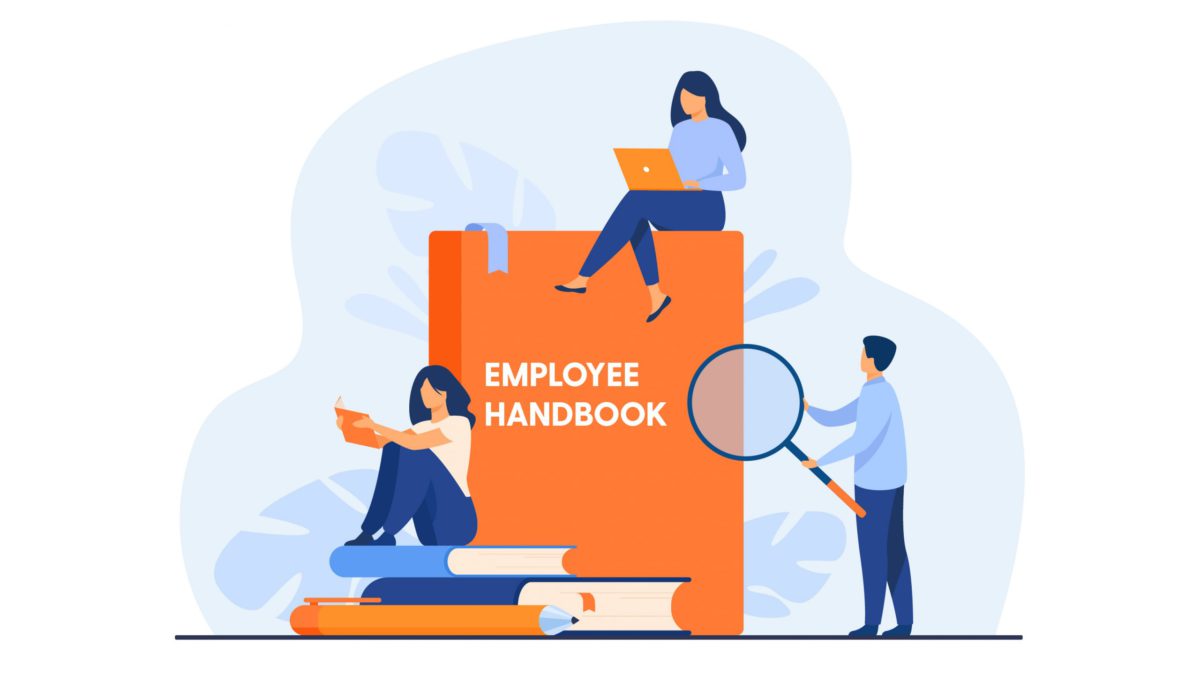
5 ways to talk about mental health at work
October 11, 2022
New Mednefits panel provider: NTUC Health Denticare
October 26, 2022Employee handbook in Malaysia – Best Practices [Template]
General
Employee handbook in Malaysia - Best Practices [Template]
October 18, 2022
![Employee handbook in Malaysia – Best Practices [Template] Employee handbook in Malaysia – Best Practices [Template]](https://www.mednefits.com/wp-content/uploads/2021/06/60bf26bb3338cf3f3bd297f2_What-is-employee-handbook-scaled.jpg)
What if an employee took your organisation's confidential document and couldn't be reached. The next day, you received a resignation email implying that he won't come to work anymore.
You would probably scramble around looking for information to determine what actions you can take against the employee.
Or you could refer to the employee handbook.
In case you don't know, the employee handbook is a helpful document that contains policies and guidelines for employees. All employees should read it to ensure they understand what is expected from them and their rights.
If you don't have it yet or want to enhance your existing handbook, this article is for you.
In this article, you'll learn everything you need to know about an employee handbook in Malaysia.
We'll answer questions such as:
- What is the employee handbook?
- What are its benefits?
- What must be included and excluded from it?
- How to write an employee handbook?
- Who needs an employee handbook?
- How long should it be?
![Employee handbook in Malaysia – Best Practices [Template] Employee handbook in Malaysia – Best Practices [Template]](https://www.mednefits.com/wp-content/uploads/2021/06/60bf26bb3338cf3f3bd297f2_What-is-employee-handbook-scaled.jpg)
What is an employee handbook?
An employee handbook is an employee manual containing key policies (such as employment policies) and guidelines related to the organisation.
It can contain information about working hours, dress code, employee conduct, vacation, and more.
It is a way for employers to communicate their expectations to employees.
The handbook should be written from an employer's point of view, not as if it were coming from the employees.
![Employee handbook in Malaysia – Best Practices [Template] Employee handbook in Malaysia – Best Practices [Template]](https://www.mednefits.com/wp-content/uploads/2021/06/60bf26e3a216100172f7f142_Benefits-of-Handbok-scaled.jpg)
Is it a legal requirement to have an employee handbook?
No, it is not a legal requirement.
However, an employee handbook in Malaysia can help employers in a conflict and reduce labour issues within the workplace.
It also shows your employees that you are committed to following international best practices on human resource management.
Plus, since many employee handbooks are available online on company websites, it demonstrates transparency and good faith.
What are the benefits of an employee handbook?
First, the employee handbook in Malaysia makes it easier to train new hires. Imagine each hire asking the same question over and over again. Your HR and the employee would feel frustrated, thus creating a bumpy hiring process and onboarding experience.
Second, employers can avoid labour issues and take appropriate disciplinary action when they have an employee handbook. For example, employees who are not properly informed of the organisation's policies may find themselves in conflict with their employer.
Third, current employees have a clear idea of what to expect when working at a company. They are aware of the workplace policies, working hours, dress code, code of conduct, company culture, values and procedures.
Fourth, an employee handbook minimises lawsuits by giving employees clear guidelines on what is expected and what they should and shouldn't do.
Fifth, it can be used as evidence during litigation when there is a disagreement between the employer and employee.
And finally, if you have multiple locations across the country or world, employees will know what to expect from different offices. This saves your local HR time from onboarding transferred employees.
In a nutshell, an employee handbook acts as the black-and-white bridge between you and your employees. You can refer to the employee handbook for anything about key policies, rights, guidelines, and behaviours.
![Employee handbook in Malaysia – Best Practices [Template] Employee handbook in Malaysia – Best Practices [Template]](https://www.mednefits.com/wp-content/uploads/2021/06/60bf2702471fd52e6bba3885_What-should-be-or-should-not-included-scaled.jpg)
What should be included in an effective employee handbook?
Here are some of the examples that should be included:
- Employee rights
- Employment contract and policies
- Rules for employee conduct and employee behaviour
- Complaints and grievances handling procedure
- Rules on company email usage, breaks, attendance.
- Guidelines for phone use (e.g. no private calls during work hours)
- Absent from work handling process
- Rules on dating and relationships in the office
- Alcohol and drug policy
- Privacy policy for employees handling personal data, sensitive, or confidential information
- Overtime and work hours
- Equal opportunity policy in terms of employment, promotions, training, transfers and compensation (e.g., do not discriminate against employees based on race or gender).
- Employee disability policy
- Discrimination policy
- Leave of absence policy for employees who need time off (e.g., maternity leave, family emergencies)
- Promotions and disciplinary action policy
- Rules on dress code while working in the office
- Procedure for termination of employment
The employee handbook should provide all these key policies and more. It gives clear policies, procedures, response to actions, and guidelines to help your company avoid legal hassles or potential liability issues down the line.
Typically, the employee handbook in Malaysia also includes Ministry of Human Resources employment laws, legislation and core values.
What should NOT be included in an employee handbook in Malaysia?
There are a few topics that should not be included in your employee handbook, including:
- Complaints to the labour commissioner
- Discussing salaries with other employees or outsiders
- Information about contracts on individual projects and benefits for retired personnel
- Information about the company's financial difficulties
- Rules for employee clubs or associations
- Any personal identifiable information such as names, salaries, addresses, amount of EPF, and KWSP ID.
These topics are confidential and require a separate agreement with current employees before discussing them in detail.
It is also important not to include any policies on handling disputes because employee handbooks are not legally binding.
What policies are required in an employee handbook?
The following are the policies that should be included in an employee handbook:
- Employee benefits
- Privacy notice for internet device and data
- Anti - harassment and discrimination policy
- Workplace violence prevention guidelines (if applicable)
- Workplace harassment awareness training requirements
- Termination of employment procedures for individual employees (layoffs or terminations).
- Discrimination and harassment, including what is not tolerated in the workplace
- Health and safety
- Personal information protection policy
- Emergency procedures, e.g., evacuation and fire response
- Disciplinary actions that may result in suspension or discharge from employment
- Malaysia Employment Act & Labour Ordinance
- Industrial Relations Act
- Social Security Act
- Skills Development Act
- Employment contract
- Remote work
How long should an employee handbook be?
Typically, the employee handbook in Malaysia is 30 pages long, but its length depends on the size of your company.
If you have a small group of employees, it won't take as many pages.
Whereas if you work for a large corporation with over 500 employees, it may take more pages to cover all of your policies.
![Employee handbook in Malaysia – Best Practices [Template] Employee handbook in Malaysia – Best Practices [Template]](https://www.mednefits.com/wp-content/uploads/2021/06/60bf2743912a302d67df8a65_Who-needs-it-scaled.jpg)
How do you write an employee handbook?
Here's a step-by-step guide to help you get started:
- Decide whether you want to use a template or develop your own. For starters, we recommend downloading this Employee Handbook Template.
- Determine the tone of voice and English grade level that is appropriate for your employee handbook.
- Outline what information should be included in the employee handbook, such as company policies, employment contract, benefits, salary details, and more.
- Fill each section in the outline by gathering the necessary information in and out of your organisation.
- Create a table of contents to help people navigate the employee handbook.
- Obtain feedback from your team before finalising it.
- Hire a proofreader or editor and graphic designers for any illustrations within the employee handbook.
- Get the handbook approved by your leadership.
![Employee handbook in Malaysia – Best Practices [Template] Employee handbook in Malaysia – Best Practices [Template]](https://www.mednefits.com/wp-content/uploads/2021/06/60bf27686ab97c586cf5e6cb_What-to-do-next-scaled.jpg)
What do you do after creating the employee handbook?
The final step after writing the employee handbook is to communicate it to all of your employees.
This can be done in various ways:
- Emailing them an attachment or URL link,
- Printing copies and placing them around the workplace for people to read while they work, or
- Putting up posters on noticeboards within the organisation (if it's a summary of a few pages).
Wrapping it up
The employee handbook is not legally required in Malaysia.
It helps to ensure that employees know what policies are in place and the value of their employment with you.
An employee handbook should come from your company's values, be easy to read regardless of language proficiency, have an index listing every page to be used as a reference source, and be accessible to the employee via an electronic form if they wish.
Think of the employee handbook as an insurance plan. It's not compulsory, but you'll need it when unfortunate accidents happen.
![Employee handbook in Malaysia – Best Practices [Template] Employee handbook in Malaysia – Best Practices [Template]](https://www.mednefits.com/wp-content/uploads/2021/06/60bf277d4e1c700beff410b8_Free-template-scaled.jpg)
Download this free Employee Handbook Template and start creating an effective and engaging handbook.
About Mednefits:
Mednefits helps businesses take care of their employees with its automated, affordable, and accessible employee benefits platform.
Request to join Mednefits for free to help process and track claims in real-time, while controlling costs.




